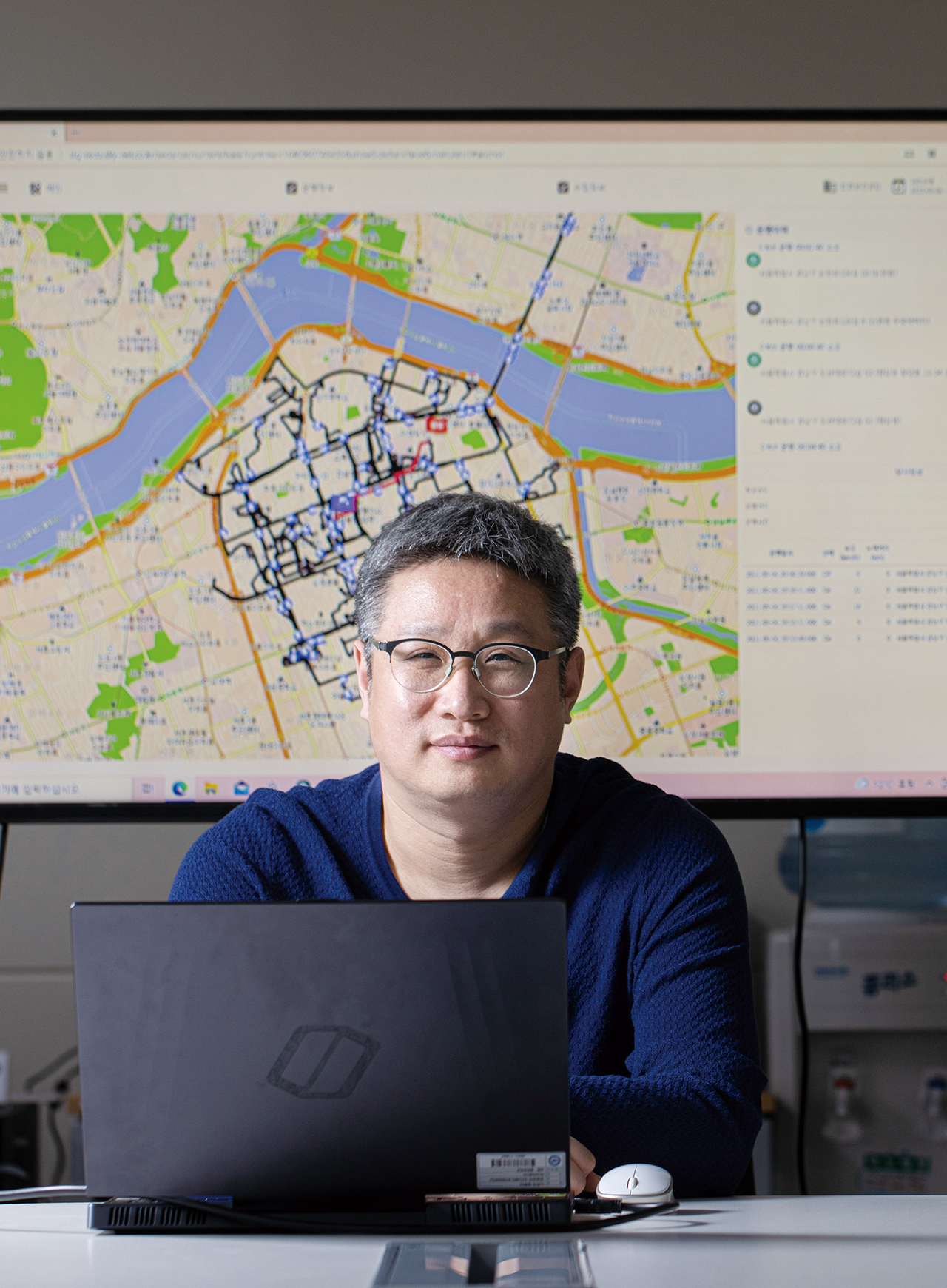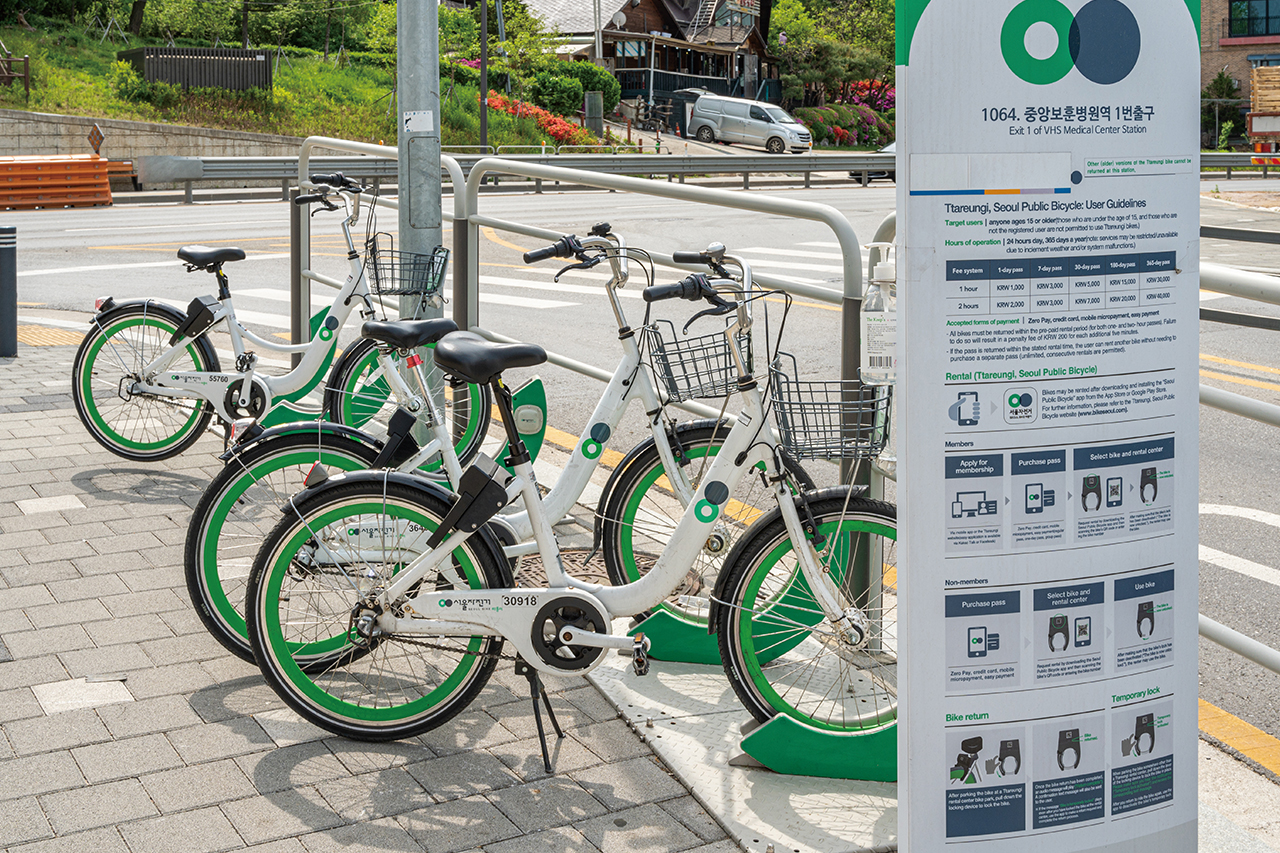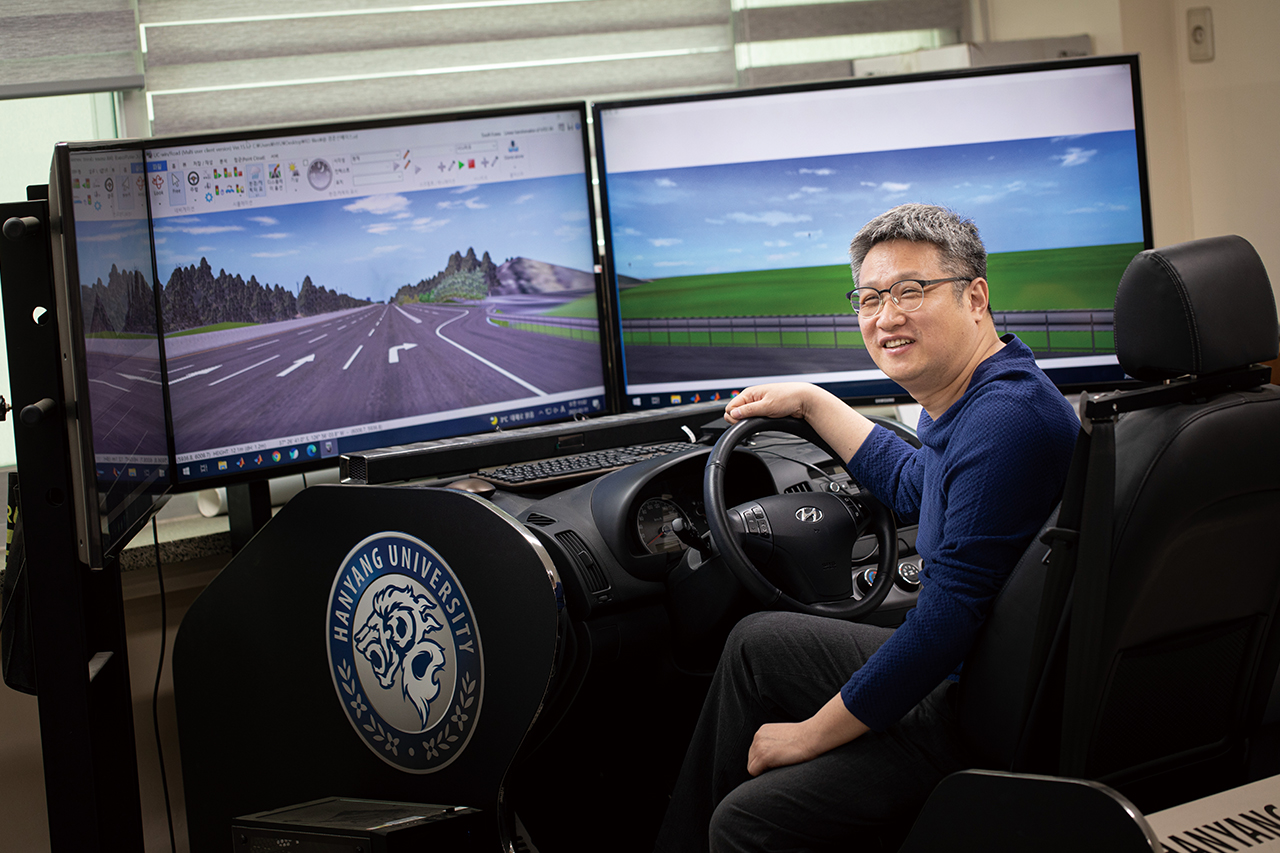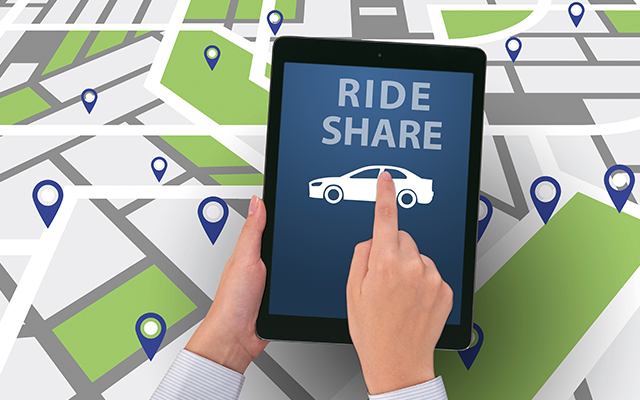언제부터인가 캠퍼스 내 이동수단으로 자리 잡은 전동 킥보드. 최근에는 전기 자전거도 눈에 띈다. 그런데 이들 이동수단은 직접 구입하지 않아도 이용할 수 있다. 공유 모빌리티 업체에 가입한 후 필요할 때만 이용하고 이용한 만큼 요금을 지불하면 된다. 이렇게 캠퍼스 안을 공유 킥보드나 자전거로 이동하는 모습은 대학가 신풍속도가 됐다.
정문으로부터 도보로 15~20분 거리인 한양대 ERICA캠퍼스 제2공학관 앞 거치대에도 카카오T바이크, 지쿠터, 버드 등 각종 공유 모빌리티 업체들의 킥보드와 자전거가 주차돼 있다. 이건우 교수는 캠퍼스가 넓다 보니 마이크로 모빌리티(단거리 소형 이동수단)를 이용하는 학생들의 모습을 쉽게 볼 수 있다고 전했다.
“대중교통을 이용하기 어려운 서비스 사각지대에 모빌리티 업체들이 공유경제 형태로 진입해 시장을 형성했습니다. 이용자들의 가려운 곳을 긁어줘 급성장하고 있죠.”
공유경제 비즈니스 모델을 만난 뒤 성장에 가속도가 붙은 모빌리티 산업. 2008년 세계 최초의 차량 공유 업체인 미국의 ‘집카(Zipcar)’가 등장한 이후 우버, 리프트, 그랩 등의 차량 공유 업체들은 글로벌 시장을 무대로 세를 불려 유니콘을 넘어 데카콘(기업가치 100억 달러 이상 스타트업)으로 성장했다. 국내에서도 2011년 ‘쏘카’가 제주도에서 20대로 사업을 개시한 이래, 공유 모빌리티 서비스 영역이 차량 공유를 넘어 전동 킥보드·전기 자전거 공유, 항공편 중개, 공유 주차 등 전방위로 확산하는 중이다. 공유 모빌리티 스타트업에 대기업과 투자자들의 자금이 몰리고, 쏘카는 코스피 상장까지 준비하고 있다. 그런데 많은 산업 중 유독 모빌리티 분야가 공유경제와 찰떡궁합을 이루는 이유는 무엇일까.
“출퇴근 시 자가용을 이용하는 경우, 출근할 때 한 시간, 퇴근할 때 한 시간을 빼면 나머지 시간은 그냥 주차장에 놓여 있는 상황이죠. 자원의 활용을 극대화해 추가생산을 제한하자는 공유경제 취지에서 봤을 때 모빌리티는 효용성이 큰 분야라 할 수 있습니다. 거기에 소형 컴퓨터 기능을 하는 스마트폰 보급으로 현 위치에서 가장 가까운 곳의 이동수단을 이용할 수 있고, 바로 예약과 결제가 가능해 이용 편의성이 현격히 높아졌죠. 그 결과 소비자들이 활발하게 이용하게 됐습니다.”
Recently, electric kickboards have become a main means of transportation on campus. The use of electric bicycles is increasing these days as well. But students do not need to purchase these kickboards and bicycles to use them. They can use such vehicles when necessary and pay as much as they use after simply signing up for a shared mobility service. Moving with shared kickboards or bicycles on campus has become a new trend in universities.
In front of Engineering Building II at the ERICA Campus, a fifteen- to twenty-minute walk from the Main Gate, kickboards and bicycles owned by various shared mobility companies, such as Kakao T Bike, GCooter, and Bird, are parked. Professor Lee Gun-woo says that the campus is so huge that many students are using small, short-distance vehicles, known as micromobility.
“Mobility companies have formed a market based on a sharing service in the area where public transportation services are not available. They are growing rapidly, satisfying the needs of users.”
The mobility industry has gained momentum since it adopted the sharing economy business models. Since the foundation of “Zipcar” in 2008, which is the world-first American car-sharing company, car-sharing companies such as Uber, Lift, and Grab have grown beyond unicorns to decacorns, startups valued at over $10 billion, expanding their businesses to the global market. In Korea, since “Socar” started its business with twenty cars in Jeju Island, shared mobility services have been expanding their scope beyond car sharing to many other areas including electric kickboard and electric bicycle sharing, flight sharing, and shared parking. Shared mobility startups are attracting funding from large companies and investors, and Socar is planning to go public on the KOSPI. Then, why are the mobility sector, among many other industries, and the sharing economy a perfect match for each other?
“If a person uses their own car for commuting, the car just has to stay in a parking lot for the rest of the time except for a total of two hours taken for commuting. From the perspective of the sharing economy, which aims to maximize the use of the existing resources to avoid additional production, mobility has huge potential. And these days, the wide use of smartphones, similar to a small computer, enables their users to find the nearest means of transportation available from their current location and also to reserve and pay for a service if necessary, which makes it much more convenient to use any services. As a result, more and more users enjoy using the services.”





